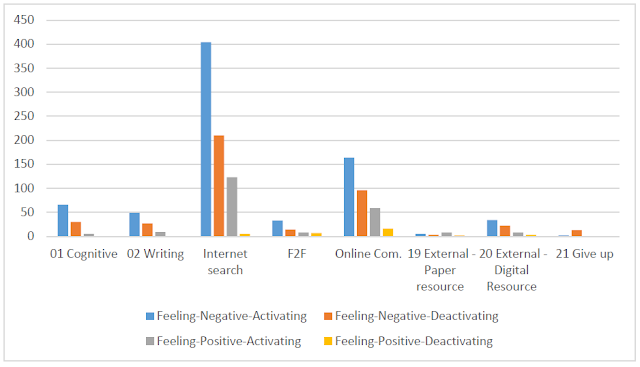-
Negative emotion is not always harmful
-
Negative-activating emotions have positive impact on students’ performance
-
Negative-activating emotions dominate students feeling in online learning
-
Connectivist learning environments arouse negative emotions of higher education students
Abstract
Emotion has long been a question of great interest in a wide range of fields. As a general rule, emotions are categorized as positive, which we seek, and negative, from which we turn away. However, empirically-backed connectivists claim that even negative emotions produce positive effects on student performance. What is less clear is how this process happens. This study had two primary aims. First, to assess the prevalence and distribution of emotions in connectivist environments. Second, to provide in-depth and experiment-based analysis that shows how and when negative emotions have their positive effect. Data for this study were mainly collected using an aided think-aloud protocol with nine participants, each of whom received ten tasks. Findings of the current study confirmed the dominance of negative emotions in connectivist learning environments and presented a model that could explain the variation of empirical results. Implications for researchers and teachers in distance education are discussed.Keywords:
connectivism
emotion
control-value theory
online learning
higher education
Cited as:
Aldahdouh, A. A. (2020). Emotions among students engaging in connectivist learning experiences. The International Review of Research in Open and Distributed Learning, 21(2), 98–117. https://doi.org/10.19173/irrodl.v21i2.4586


Aldahdouh, A. A. (2020). Emotions among students engaging in connectivist learning experiences. The International Review of Research in Open and Distributed Learning, 21(2), 98–117. https://doi.org/10.19173/irrodl.v21i2.4586
ReplyDelete